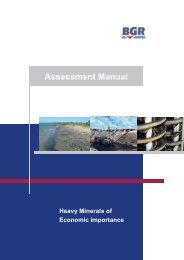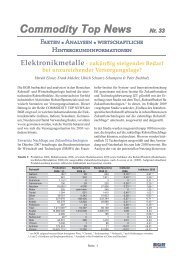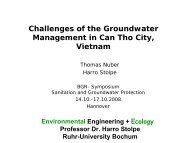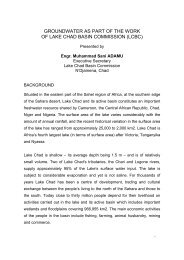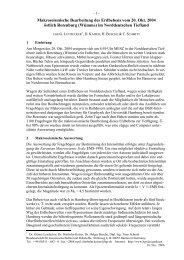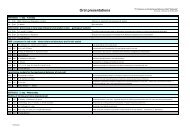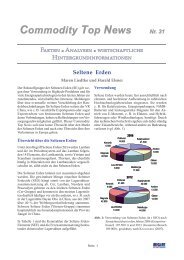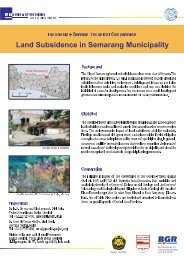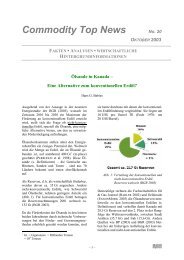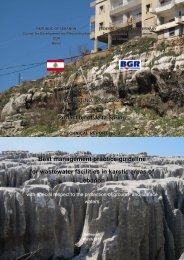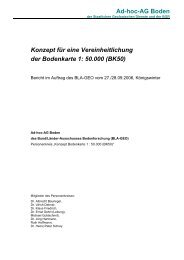THE SMOOTH SOUNDING GRAPH. A Manual for Field Work ... - BGR
THE SMOOTH SOUNDING GRAPH. A Manual for Field Work ... - BGR
THE SMOOTH SOUNDING GRAPH. A Manual for Field Work ... - BGR
You also want an ePaper? Increase the reach of your titles
YUMPU automatically turns print PDFs into web optimized ePapers that Google loves.
32<br />
2.1. How to carry out a field measurement<br />
Now we drive on a measuring car into the field to record a sounding<br />
curve. For this we choose a suitable point in the considered measuring<br />
area, which is the centre point of the measuring lay-out. One shall pay<br />
attention to the potential electrodes. Their site should always be on natu-<br />
rally grown earth.<br />
The direction of the lay-out can be determined by an angle reflector. Then<br />
the measuring car will drive into the right position to the site of the po-<br />
tential electrodes.<br />
In Fig.24 we show a wrong placing of the car. The distance between<br />
measuring car and the potential electrodes is too small, so that already<br />
low leakage currents can more or less influence the potential electrode<br />
voltage. Those leakage currents flow into the earth either via the car or<br />
the cable drums, depending on the resistivity of the first layer.<br />
In Fig.25 the right placing of the measuring car is to be seen. The dis-<br />
tance to the potential electrodes should amount to at least 20m and the<br />
car as well as the cable drums should stand on the “0”-line between the<br />
potential electrodes, running vertically to the potential electrode extent.<br />
This placing of the measuring car should be desirable in every case.<br />
The following processing is schematically demonstrated in Fig.26. When<br />
the car has the right position, the measuring lay-out can be built up. The<br />
cable drums are taken out of the car and set to ground. In order to<br />
enlarge the insulation between the cable drums and the ground, it is rec-<br />
ommended to pose a rubber-mat below each cable drum (Fig.27). On<br />
each drum there is in addition to the electrode cable a 100m long meas-<br />
uring tape (wire of insulating material), on which points are marked <strong>for</strong><br />
usual electrode distances according to the table with the geometric factors<br />
K (on page 36). The assistants are walking (or better running) in opposed<br />
directions pulling the measuring tapes. By a stick they fix these measur-<br />
ing tapes at both ends.



